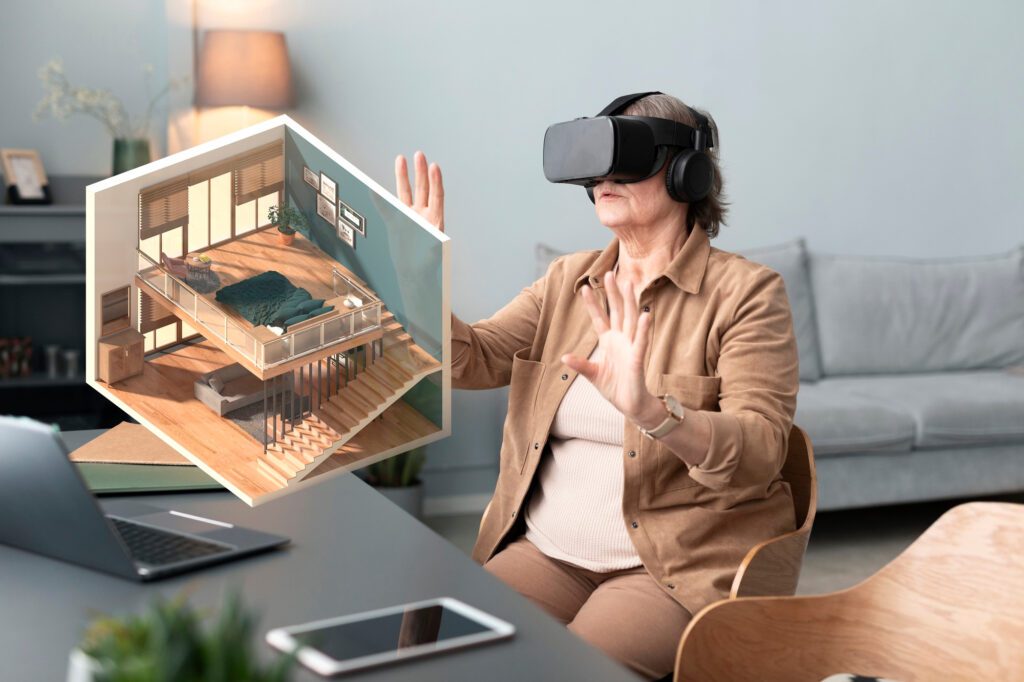A virtual tour is a simulated experience of a physical location, typically composed of a series of images, videos, or interactive elements that allow users to explore and navigate through the space. Virtual tours are created using multimedia content, often in a 360-degree format, which enables viewers to look around in all directions as if they were physically present in the location.
Key features of virtual tours include:
- Immersive Content: Virtual tours often use panoramic images or videos to provide a more immersive experience. These images capture a wide field of view, allowing users to explore the surroundings in detail.
- Navigation: Viewers can navigate through the virtual environment using controls or interactive elements. This can include clicking on arrows to move forward or backward, dragging the view with a mouse or touchscreen, or using keyboard commands.
- Interactivity: Some virtual tours include interactive elements, such as information points, hotspots, or clickable objects. These features provide additional details or multimedia content related to specific areas or objects within the virtual space.
- Virtual Reality (VR) Support: Many virtual tours are compatible with virtual reality headsets, providing an even more immersive experience. Users wearing VR headsets can feel like they are physically present in the virtual environment.
Virtual tours have various applications across different industries:
- Real Estate: Virtual tours allow potential buyers or renters to explore properties remotely.
- Travel and Tourism: Virtual tours enable people to preview destinations, hotels, and attractions before planning a trip.
- Education: Virtual tours are used in educational settings to provide virtual field trips or explore historical sites and museums.
- Businesses: Companies may use virtual tours to showcase their facilities or products to clients and customers.
The creation of virtual tours involves capturing high-quality images or videos, stitching them together, and then integrating interactive elements as needed. There are several platforms and tools available for creating and hosting virtual tours, ranging from simple solutions for personal use to more sophisticated options for businesses and organizations.

How to Create a Virtual Tour for Free
Creating a virtual tour for free can be accomplished using various online tools and platforms. Here’s a step-by-step guide on how to create a basic virtual tour:
- Plan Your Tour:
- Identify the locations or areas you want to include in your virtual tour.
- Decide on the sequence or flow of the tour.
- Capture Photos or Videos:
- Use a camera or smartphone to capture high-quality photos or videos of the locations.
- Ensure good lighting and stability for clear and appealing visuals.
- Choose a Virtual Tour Platform:
- There are several free platforms that allow you to create virtual tours. Some popular options include:
- Google Tour Creator: Google’s platform for creating immersive 360-degree tours. Visit the Google Tour Creator website.
- Roundme: A platform for creating and sharing 360-degree panoramic images. Visit the Roundme website.
- Marzipano: An open-source tool for creating 360-degree virtual tours. Visit the Marzipano website.
- There are several free platforms that allow you to create virtual tours. Some popular options include:
- Upload Your Media:
- Follow the instructions on the chosen platform to upload your photos or videos.
- Organize your media in the correct order to create a seamless tour experience.
- Add Points of Interest (Optional):
- Some platforms allow you to add points of interest (POIs) or annotations to enhance the user experience.
- Add information, links, or multimedia content to specific points in your tour.
- Customize Your Tour:
- Explore customization options provided by the platform, such as background music, transition effects, and themes.
- Preview Your Virtual Tour:
- Before publishing, preview your virtual tour to ensure everything is in order and works as intended.
- Publish and Share:
- Once satisfied with your virtual tour, publish it on the platform.
- Share the link to your virtual tour with others via social media, email, or other channels.
- Promote Your Virtual Tour:
- Share your virtual tour on social media platforms, your website, or any other relevant channels to reach a wider audience.

Remember to check the terms of use for the platform you choose to ensure compliance with their policies. Additionally, keep in mind that while these platforms may offer free plans, they may also have limitations on storage, features, or the number of tours you can create.

